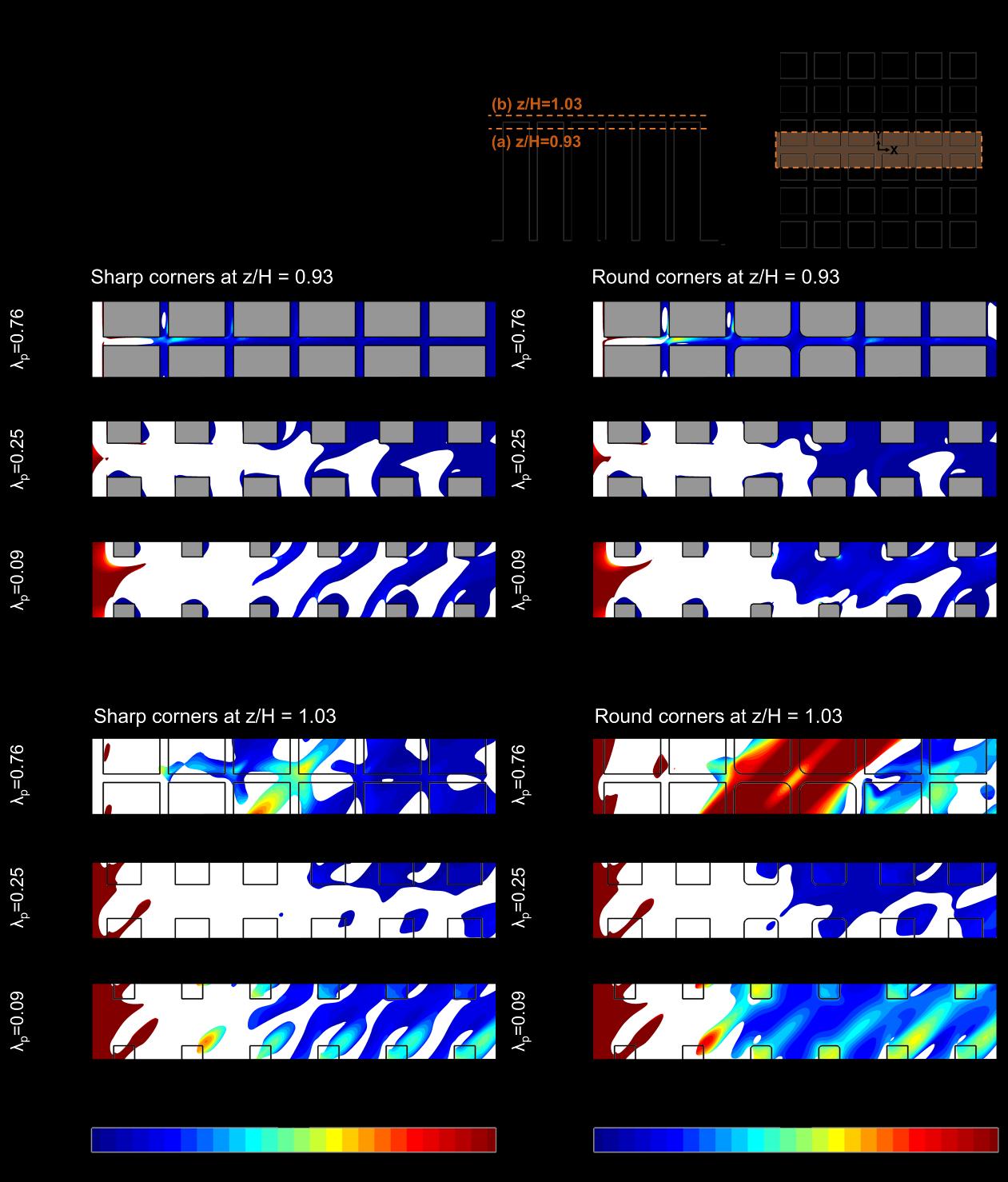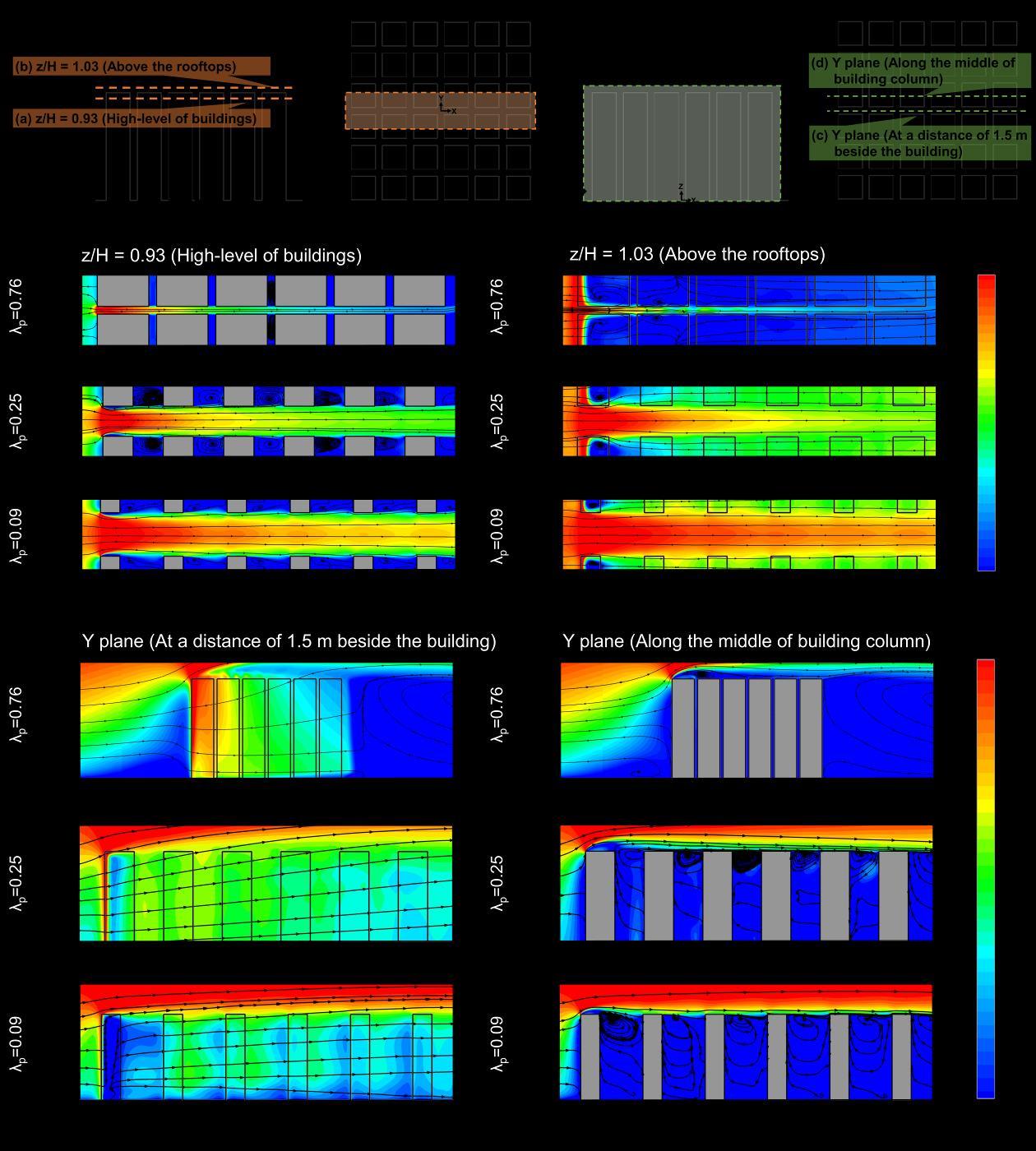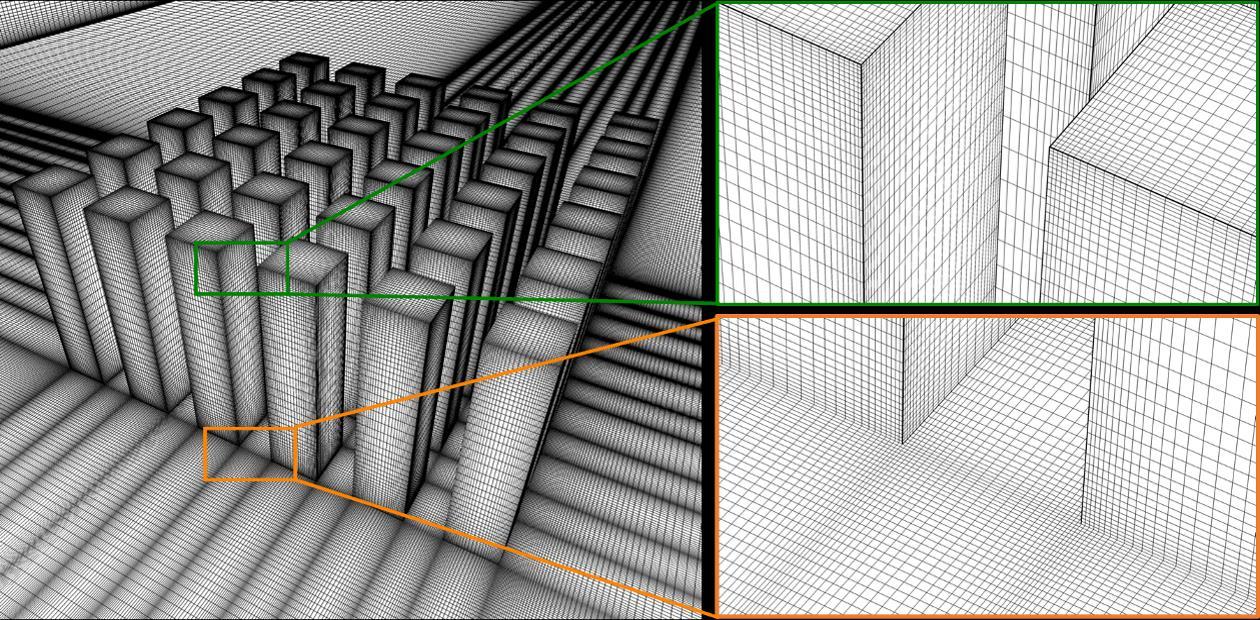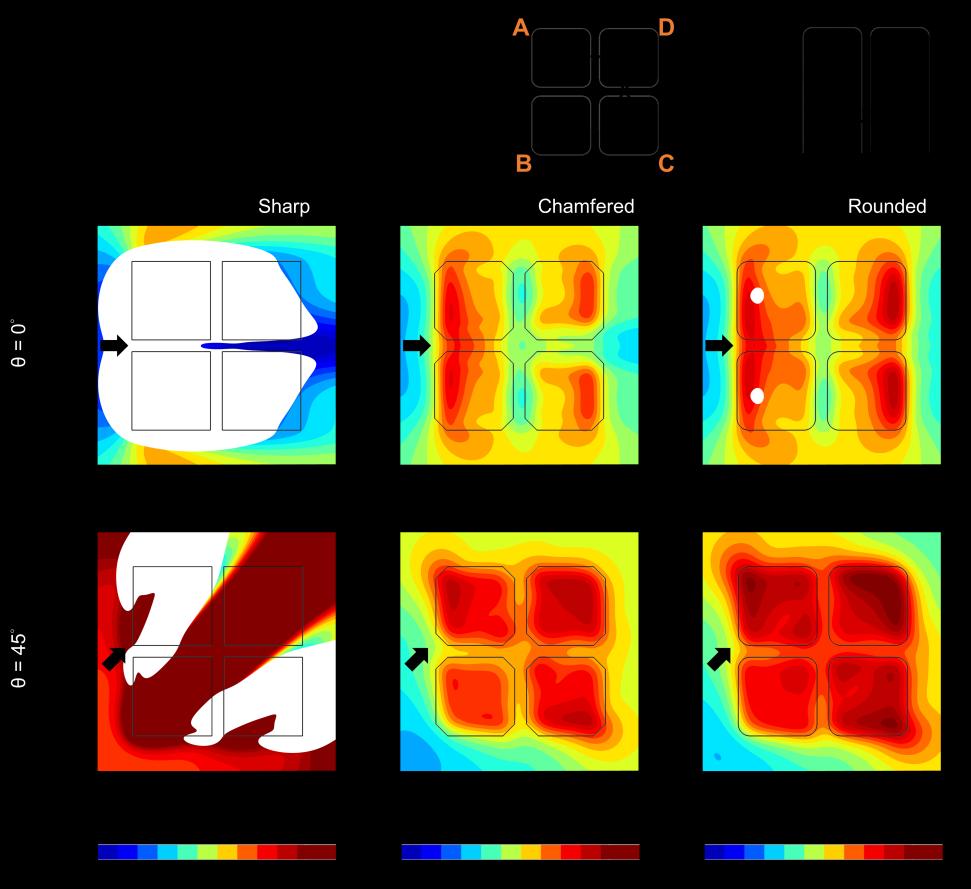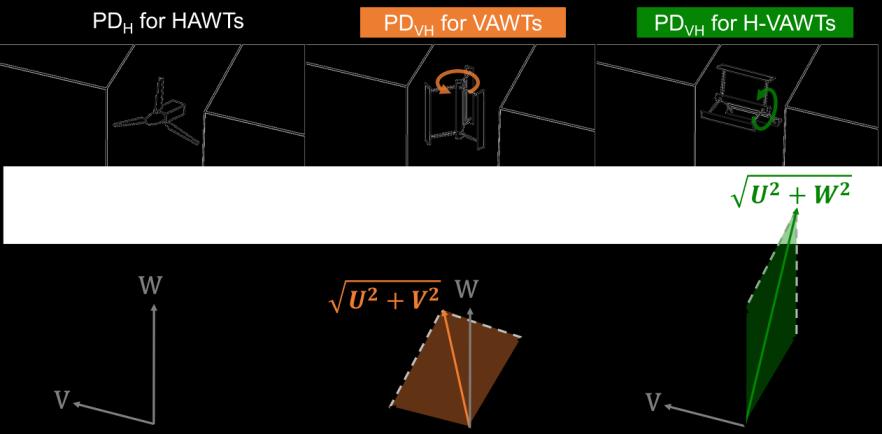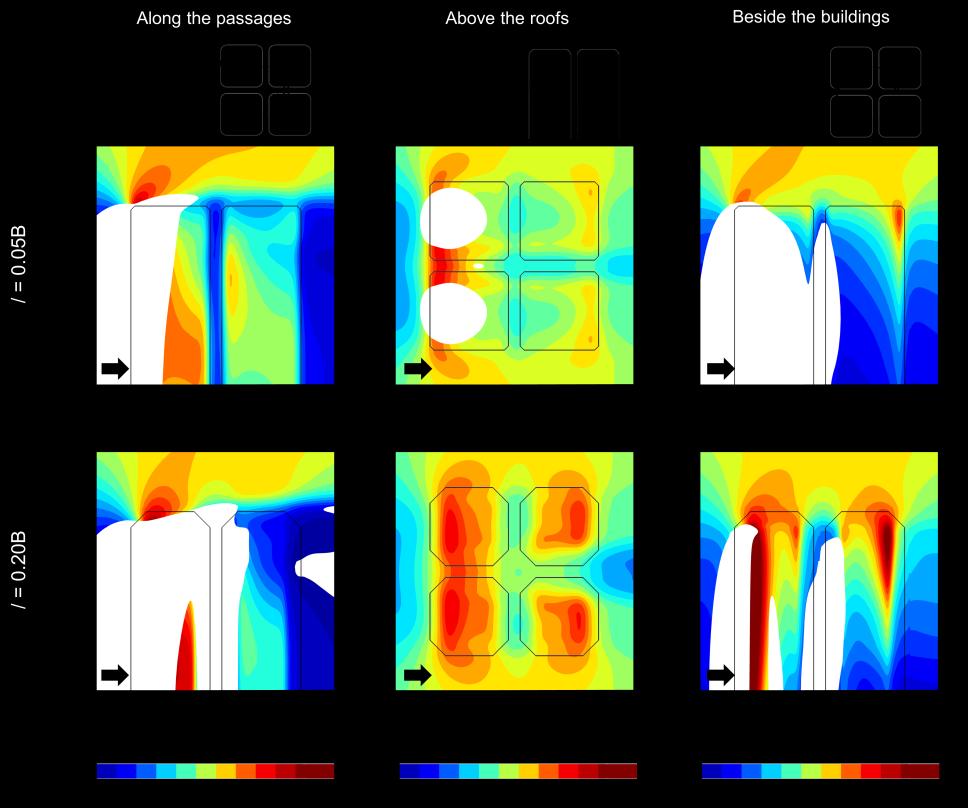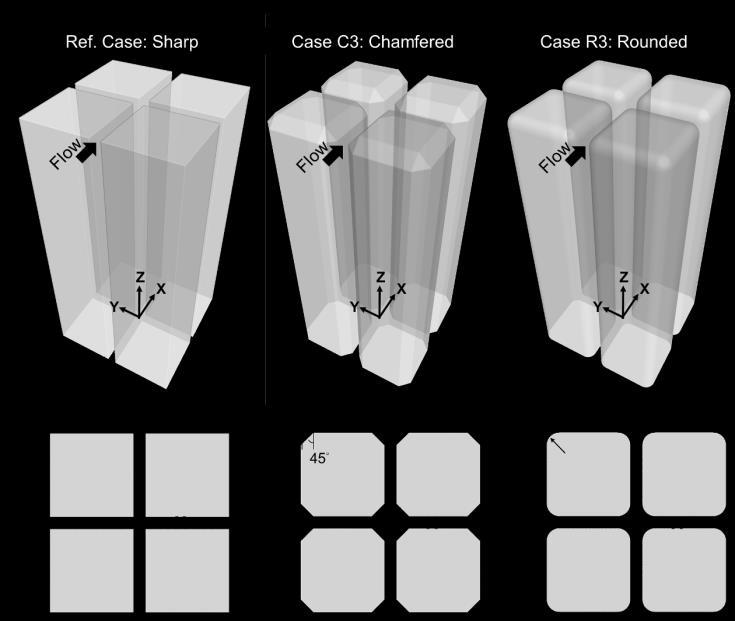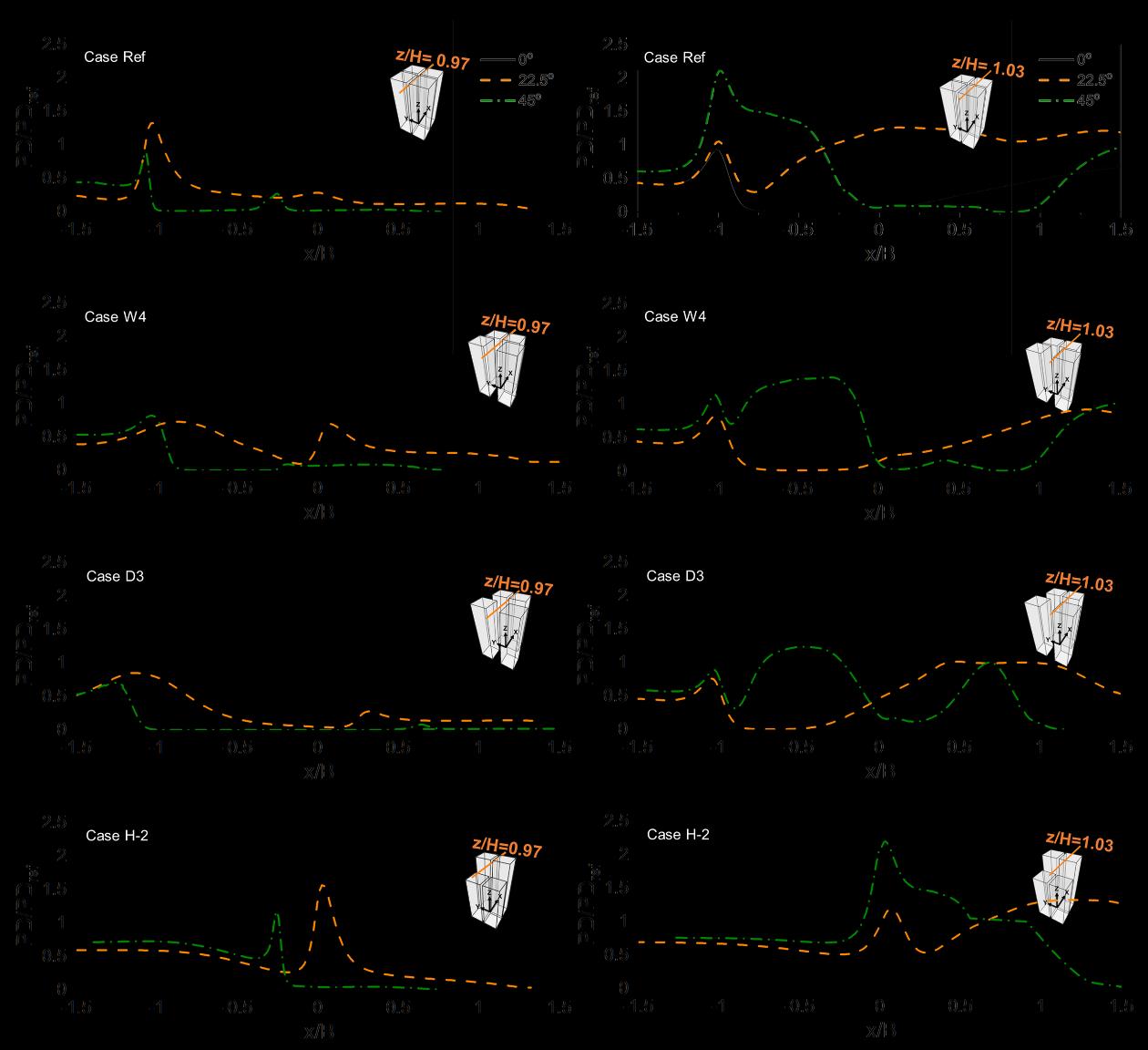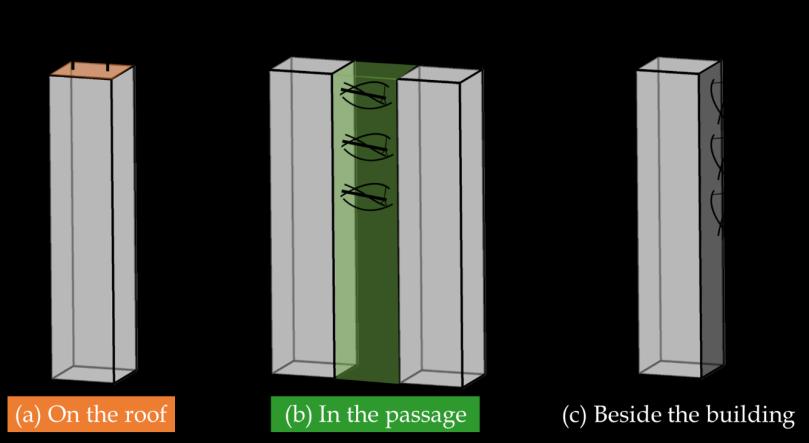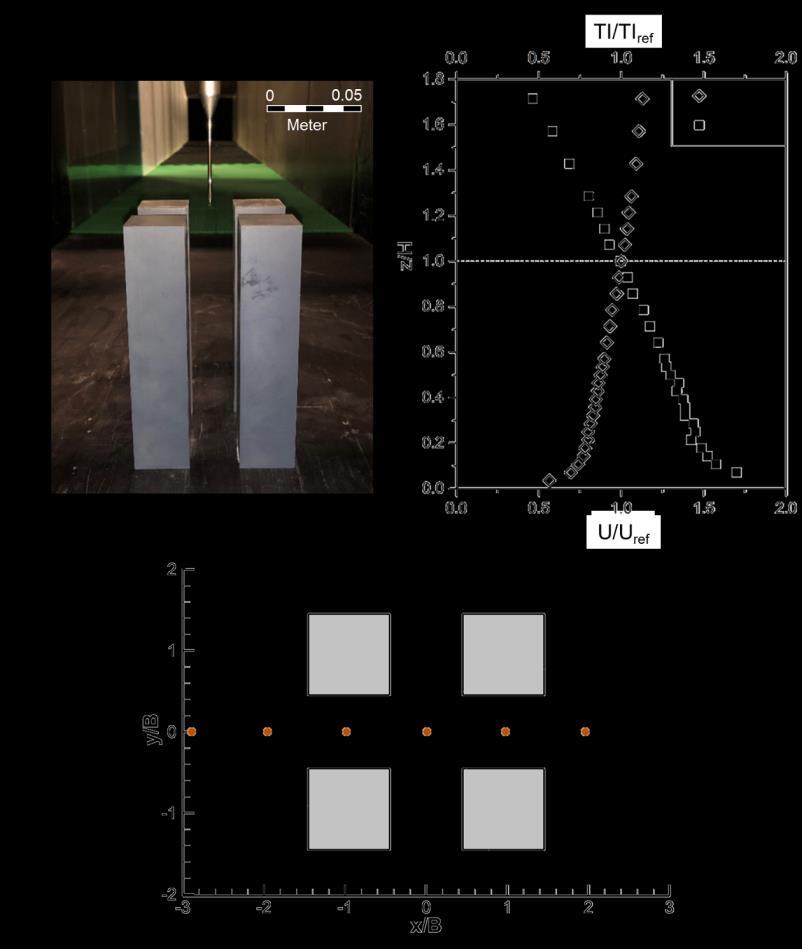Urban wind energy potential: Impact of building arrangement and height
17
length is 3H, which is smaller than that proposed by the best practice guidelines, to limit unintended streamwise gradients in the vertical inlet profiles [87, 88]. The computational grid consists of 5,464,450 hexahedral cells, see Fig. 2.2b, with 20 cells in the passage between the buildings. The maximum and average y* values are 76 and 40, respectively. This ensures that the center points of wall-adjacent cells are located in the logarithmic layer of the boundary layer, thus the standard wall functions can be employed for the near-wall treatment. The grid resolution is based on a grid-sensitivity analysis presented in Section 2.2.4. 2.2.3
CFD validation: other computational settings
The profiles of the mean wind speed, turbulent kinetic energy and turbulence dissipation rate at the domain inlet are specified using the measured incident vertical profiles of the mean velocity and turbulence intensity, shown in Fig. 2.1b. The turbulent kinetic energy k is calculated from U(z) and TI (z) using Eq. 2.1, where a is 1.5. The turbulence dissipation rate ɛ is given by Eq. 2.2, with κ, u*ABL and z0 representing the von Karman constant (= 0.42), the ABL friction velocity (= 0.55 m/s), and the aerodynamic roughness length (= 9×10-6 m). 2
𝑘(𝑧) = 𝑎(𝑇𝐼(𝑧)𝑢(𝑧)) 𝑢∗
3
𝐴𝐵𝐿 𝜀(𝑧) = 𝜅(𝑧+𝑧
0)
(2.1) (2.2)
Figure 2.2. Perspective view of (a) computational domain and (b) computational grid at surfaces of the building models and part of the ground surface (5,464,450 cells).


